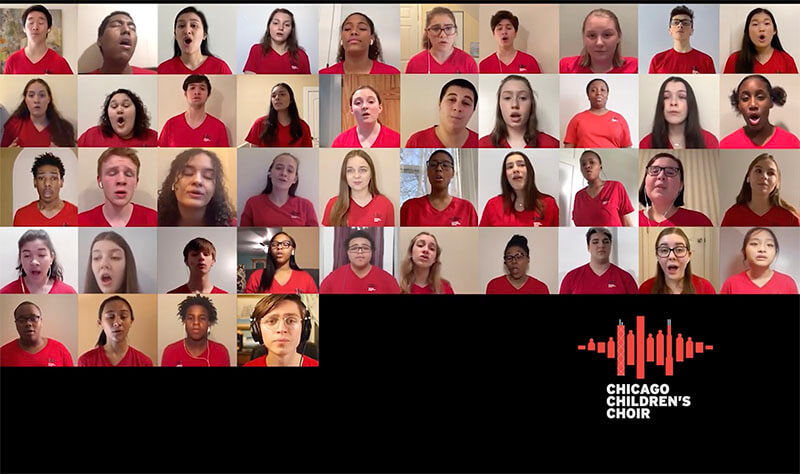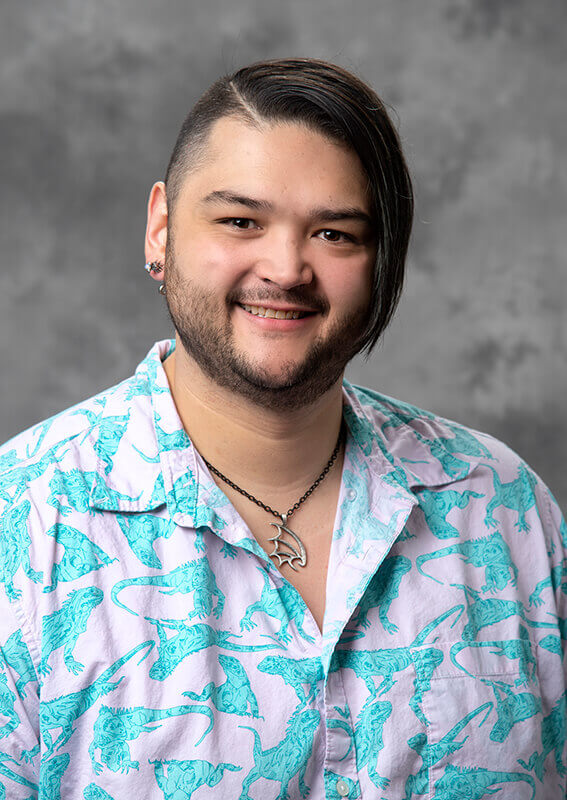June 10, 2020
After the pandemic: The future of music education and performances
 Many choirs are improvising through the COVID-19 pandemic by hosting online performances so students and audience members can participate from the safety of their own homes. (Chicago Children’s Choir)
Download image
Many choirs are improvising through the COVID-19 pandemic by hosting online performances so students and audience members can participate from the safety of their own homes. (Chicago Children’s Choir)
Download image
WHAT: Fall music classes and performances at K-12 schools and colleges will look much different if in-person instruction and traditional concerts are not allowed to resume. Many schools and colleges are improvising by hosting online classes and performances so students and audience members can participate from the safety of their own homes.
WHO: Christopher Cayari, an assistant professor of music education in the Patti and Rusty Rueff School of Design, Art, and Performance at Purdue University, researches online music-making and collective and crowdsourced performances on YouTube and other digital platforms. Cayari is guest editor of an upcoming special issue about virtual music education in the Journal of Popular Music Education and author of a related analysis on the three dispositions of “online musicking.”
QUOTE: “Until now, we have not had the infrastructure or the training available for educators to organize these kinds of virtual performances. They have already been happening in splotches in music education classes across the world, but now we’re in this situation where a lot more music teachers have to partner with sound engineers. These partnerships are growing and a lot more companies are springing up and offering this type of service to schools. Hopefully, we’ll see more easy-to-use collaborative apps where students can sing with each other without having to enlist the help of professional sound engineers.”
MORE INFORMATION: In his recent paper, Cayari writes that examples of online music-making research, projects, technologies and literacies usually occur within three dispositions:
- Do-it-yourself: “Sharing user-generated content, even in a simple form, is one of the easiest practices for online musicking. Video formats can be uploaded on YouTube; posted on Facebook for family and friends; or featured on Instagram, TikTok or Tumblr. Audio recordings can be shared via SoundCloud or Bandcamp.”
- Do-it-with-others: “That’s the idea of collaborating with a friend — maybe across the country, maybe across the world, maybe right next door with a couple of students — and going back and forth and trying to cultivate something together.”
 Christopher Cayari. (Courtesy photo)
Download image
Christopher Cayari. (Courtesy photo)
Download image
- Do-it-for-others: “These are collective performances, like the 'Hail Purdue' virtual choir and the 'We Are' virtual performance by Chicago Children’s Choir, where you’ve got an organizer who dreams it up big, you’ve got people who’ve sent in their performances, and you’ve got someone who puts it all together. Each person has their own task that they doing for everyone else, each things they now don’t have to do for themselves to the fullest capacity.”
READ MORE:
- With auditoriums closed, schools turn to virtual end-of-year musical performances.
- Online music strikes a chord during pandemic, but it’s not a new sensation.
About Purdue University
Purdue University is a top public research institution developing practical solutions to today’s toughest challenges. Ranked the No. 6 Most Innovative University in the United States by U.S. News & World Report, Purdue delivers world-changing research and out-of-this-world discovery. Committed to hands-on and online, real-world learning, Purdue offers a transformative education to all. Committed to affordability and accessibility, Purdue has frozen tuition and most fees at 2012-13 levels, enabling more students than ever to graduate debt-free. See how Purdue never stops in the persistent pursuit of the next giant leap at purdue.edu.
Writer: Joseph Paul, paul102@purdue.edu (working remotely but will provide immediate response)
Source: Christopher Cayari, ccayari@purdue.edu (also available for phone and Zoom interviews)
Note to Journalists: Journalists interested in a copy of the paper should contact Joseph Paul, Purdue News Service, paul102@purdue.edu. A solo musician stock image and a photograph of the professor are available to journalists via a Google Drive folder. A “Hail Purdue” virtual choir is available to view via YouTube.

